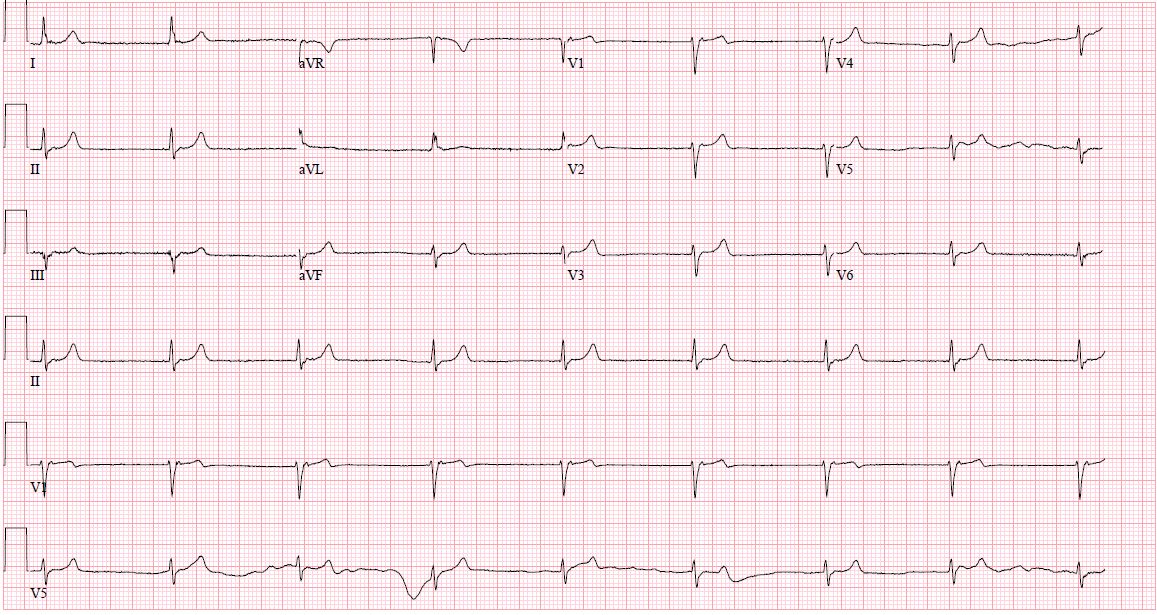[1]
Normal sinus heart rate: sinus tachycardia and sinus bradycardia redefined., Spodick DH,, American heart journal, 1992 Oct
[PubMed PMID: 1529897]
[2]
Thery C,Gosselin B,Lekieffre J,Warembourg H, Pathology of sinoatrial node. Correlations with electrocardiographic findings in 111 patients. American heart journal. 1977 Jun
[PubMed PMID: 871100]
[3]
Dobrzynski H,Anderson RH,Atkinson A,Borbas Z,D'Souza A,Fraser JF,Inada S,Logantha SJ,Monfredi O,Morris GM,Moorman AF,Nikolaidou T,Schneider H,Szuts V,Temple IP,Yanni J,Boyett MR, Structure, function and clinical relevance of the cardiac conduction system, including the atrioventricular ring and outflow tract tissues. Pharmacology & therapeutics. 2013 Aug
[PubMed PMID: 23612425]
[4]
Arterial blood supply of the atrioventricular node and main bundle., Van der Hauwaert LG,Stroobandt R,Verhaeghe L,, British heart journal, 1972 Oct
[PubMed PMID: 5086972]
[5]
Anatomical aspects of the arterial blood supply to the sinoatrial and atrioventricular nodes of the human heart., Pejković B,Krajnc I,Anderhuber F,Kosutić D,, The Journal of international medical research, 2008 Jul-Aug
[PubMed PMID: 18652764]
[6]
High-resolution mapping of the triangle of Koch: Spatial heterogeneity of fast pathway atrionodal connections., Chua K,Upadhyay GA,Lee E,Aziz Z,Beaser AD,Ozcan C,Broman M,Nayak HM,Tung R,, Heart rhythm, 2018 Mar
[PubMed PMID: 29081398]
[8]
Tachyarrhythmias, bradyarrhythmias and acute coronary syndromes., Trappe HJ,, Journal of emergencies, trauma, and shock, 2010 Apr
[PubMed PMID: 20606790]
[9]
Cardiac involvement in the muscular dystrophies., Silvestri NJ,Ismail H,Zimetbaum P,Raynor EM,, Muscle & nerve, 2017 Nov 11
[PubMed PMID: 29130502]
[10]
Prevalence and significance of arrhythmias in long-term survivors of cardiac transplantation., Romhilt DW,Doyle M,Sagar KB,Hastillo A,Wolfgang TC,Lower RR,Hess ML,, Circulation, 1982 Aug
[PubMed PMID: 6177443]
[11]
Update on sick sinus syndrome, a cardiac disorder of aging., Rodriguez RD,Schocken DD,, Geriatrics, 1990 Jan
[PubMed PMID: 2403955]
[12]
Remodeling of sinus node function in patients with congestive heart failure: reduction in sinus node reserve., Sanders P,Kistler PM,Morton JB,Spence SJ,Kalman JM,, Circulation, 2004 Aug 24
[PubMed PMID: 15302799]
[13]
Calcium dynamics and the mechanisms of atrioventricular junctional rhythm., Kim D,Shinohara T,Joung B,Maruyama M,Choi EK,On YK,Han S,Fishbein MC,Lin SF,Chen PS,, Journal of the American College of Cardiology, 2010 Aug 31
[PubMed PMID: 20797495]
[14]
Junctional ectopic tachycardia after congenital heart surgery., Cools E,Missant C,, Acta anaesthesiologica Belgica, 2014
[PubMed PMID: 24988822]
[15]
Arrhythmias Involving the Atrioventricular Junction., Di Biase L,Gianni C,Bagliani G,Padeletti L,, Cardiac electrophysiology clinics, 2017 Sep
[PubMed PMID: 28838549]
[16]
Catheter ablation as a treatment of atrioventricular block., Tuohy S,Saliba W,Pai M,Tchou P,, Heart rhythm, 2018 Jan
[PubMed PMID: 28823599]
[17]
Treatment of 150 cases of life-threatening digitalis intoxication with digoxin-specific Fab antibody fragments. Final report of a multicenter study., Antman EM,Wenger TL,Butler VP Jr,Haber E,Smith TW,, Circulation, 1990 Jun
[PubMed PMID: 2188752]
Level 2 (mid-level) evidence
[19]
Recognition and management of digitalis toxicity., Kelly RA,Smith TW,, The American journal of cardiology, 1992 Jun 4
[PubMed PMID: 1626485]
[20]
New insights into pacemaker activity: promoting understanding of sick sinus syndrome., Dobrzynski H,Boyett MR,Anderson RH,, Circulation, 2007 Apr 10
[PubMed PMID: 17420362]
Level 3 (low-level) evidence

